Exercise 20
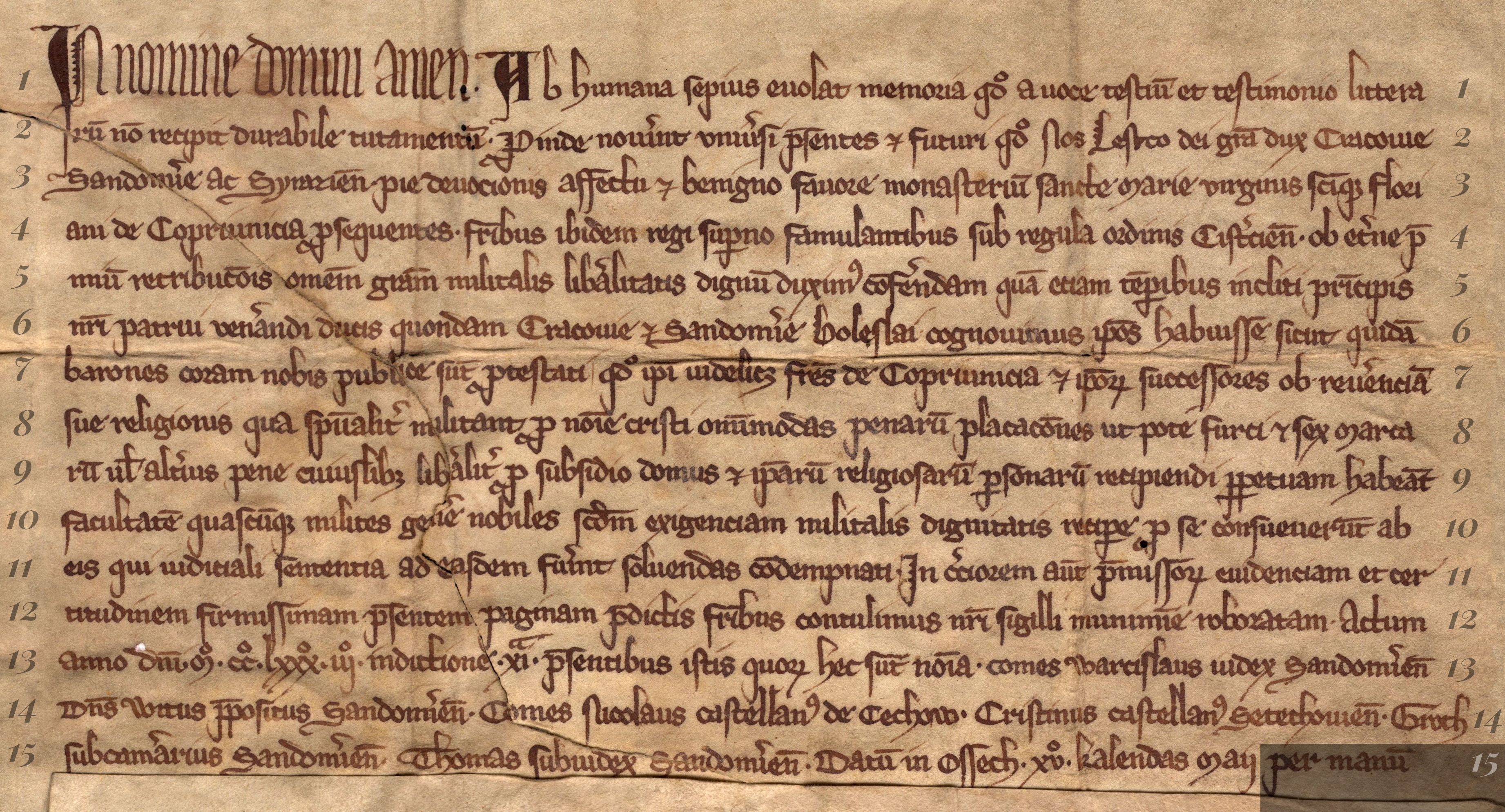
1. In nomine domini amen Ab humana sepius evolat memoria quod a voce testium et testimonio littera
2. rum non recipit durabile tutamentum Proinde noverint universi presentes et futuri quod Nos Lestco dei gratia dux Cracovie
3. Sandomirie ac Syraziensis pie devocionis affectu et benigno favore monasterium sancte Marie virginis sanctique flori
4. ani de Coprivnicia prosequentes fratribus ibidem regi superno famulantibus sub regula ordinis Cisterciensis ob eterne pre
5. mium retribucionis omnem gratiam militalis liberalitatis dignum duximus conferendam quam etiam temporibus incliti principis
6. nostri patrui venerandi ducis quondam Cracovie et Sandomirie Boleslai cognovimus ipsos habuisse sicut quidam
7. barones coram nobis publice sunt protestati quod ipsi videlicet fratres de Coprivnicia et ipsorum successores ob reverenciam
8. sue religionis qua spiritualiter militant pro nomine cristi omnimodas penarum placaciones ut pote furti et sex marca
9. rum vel alterius pene cuiuslibet liberaliter pro subsidio domus et ipsarum religiosarum personarum recipiendi perpetuam habeant
10. facultatem quascumque milites genere nobiles secundum exigenciam militalis dignitatis recipere pro se consueverunt ab
11. eis qui iudiciali sentencia ad easdem fuerint solvendas condempnati In cerciorem autem premissorum evidenciam et cer
12. titudinem firmissimam presentem paginam predictis fratribus contulimus nostri sigilli munimine roboratam Actum
13. anno domini M CC LXXX III indictione XI presentibus istis quorum hec sunt nomina comes Warcislaus iudex Sandomiriensis
14. Dominus Witus prepositus Sandomiriensis Comes Nicolaus castellanus de Cechow Cristinus castellanus Secechoviensis Groth
15. subcamerarius Sandomiriensis Thomas subiudex Sandomiriensis Datum in Ossech XV kalendas Maii
Principles of transcription
- Maintain the original entry - carry out the transcription as faithfully as possible to the original, without correcting the writer's mistakes.
┬Ā - Lines of text - the transcription should be written in lines (fragments in grey should be omitted). If the word is divided between two lines, it should be written as in the original, that is, without connecting it.
┬Ā - Punctuation - all punctuation marks or others (e.g. commas, full stops, hyphens, etc.) appearing in the original should be ignored.
┬Ā - Writing capital letters - the mechanism recognises both small and capital letters as correct.
┬Ā - Contractions - a contraction used by the writer should be written in full. Do not use square brackets to designate additional letters, complementing the contraction.
┬Ā - Numbers and dates written using digits - should be written in the same way as in the original, i.e. with the help of digits (Roman or Arabic, also in accordance with the original) and the accompanying contractions should not be written in full. Such a situation is an exception to the rule accepted for the contractions described in the previous point.
┬Ā - The letters u and v - in Latin texts they are often exchanged or written in an identical way. While transcribing, the actual, phonetic sound of the word should be used.
┬Ā - The letter ┼Ė (y with dots or dashes) - should be written as ii (double short i). Exceptions are words with Polish names (this document contains the word Syraziensis) - in such cases, the rules accepted for Polish language texts should be used, i.e. to write the letter as y.
┬Ā - The letter w - we write it as w (also when the scribe used it incorrectly).
┬Ā
You can find the full principles of transcription here.
┬Ā
Helpful tips
-
In this document there are many contractions, knowledge of them is essential for transcribing the text. Remember that if you click Abbreviations there is a set of contractions at your disposal. For general information on the subject of shortening words, click here.
┬Ā -
The invocation opening the document is written in capital letters, and the shapes of the letters differ from the other ones used in the text of the document.
┬Ā - The scribe wrote a few letters in two or even three versions. This concerns the letters: r, s, t and y.
┬Ā - It is easy to confuse the letters c and t as well as the traditional u and v - in some cases, their way of writing is almost identical.
┬Ā - A tear in the document hinders the deciphering of a few words, and probably the word genere in line 10 of the document will cause the greatest problem.
┬Ā - The document contains dates written with digits - the Principles of transcription include the rules we have accepted for such situations.
┬Ā - In the date mentioned above, there are letters with marks that indicate grammatical forms, in which the correct reading of the word appears (e.g. M┬░ - millesimo), however, due to the accepted rules (see the point above), these contractions will not be written in full. If you are interested in their full version, click on Abbreviations.
┬Ā
You will find more useful tips for transcribing old texts here.
Exercise 20
Model letters
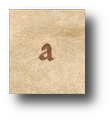


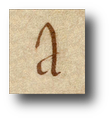
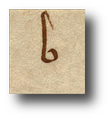


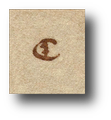


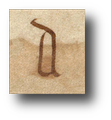

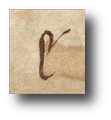


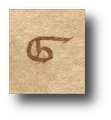
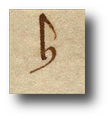

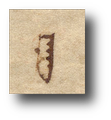



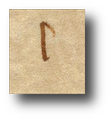

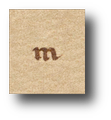

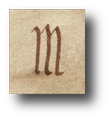

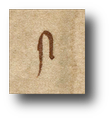

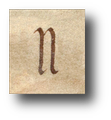




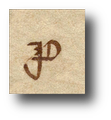
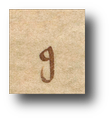



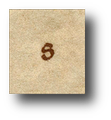




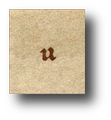
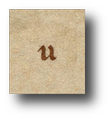

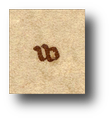





Exercise 20
Abbreviations
![alt[er]ius](https://dawnepismo.ank.gov.pl/files/practice/shortcuts/aufgabe-20/cw20alterius.png)
![aut[em]](https://dawnepismo.ank.gov.pl/files/practice/shortcuts/aufgabe-20/cw20autem.png)
![castellan[us]](https://dawnepismo.ank.gov.pl/files/practice/shortcuts/aufgabe-20/cw20castellanus.png)
![c[er]ciorem](https://dawnepismo.ank.gov.pl/files/practice/shortcuts/aufgabe-20/cw20cerciorem.png)
![Cist[er]cien[sis]](https://dawnepismo.ank.gov.pl/files/practice/shortcuts/aufgabe-20/cw20cisterciensis.png)
![co[n]dempnati](https://dawnepismo.ank.gov.pl/files/practice/shortcuts/aufgabe-20/cw20condempnati.png)
![co[n]fe[re]ndam](https://dawnepismo.ank.gov.pl/files/practice/shortcuts/aufgabe-20/cw20conferendam.png)
![consueveru[n]t](https://dawnepismo.ank.gov.pl/files/practice/shortcuts/aufgabe-20/cw20consueverunt.png)
![cuiuslib[et]](https://dawnepismo.ank.gov.pl/files/practice/shortcuts/aufgabe-20/cw20cuiuslibet.png)
![Datu[m]](https://dawnepismo.ank.gov.pl/files/practice/shortcuts/aufgabe-20/cw20datum.png)
![dignu[m]](https://dawnepismo.ank.gov.pl/files/practice/shortcuts/aufgabe-20/cw20dignum.png)
![d[omi]ni](https://dawnepismo.ank.gov.pl/files/practice/shortcuts/aufgabe-20/cw20domini.png)
![D[omi]n[u]s](https://dawnepismo.ank.gov.pl/files/practice/shortcuts/aufgabe-20/cw20dominus.png)

![duxim[us]](https://dawnepismo.ank.gov.pl/files/practice/shortcuts/aufgabe-20/cw20duximus.png)

![et[er]ne](https://dawnepismo.ank.gov.pl/files/practice/shortcuts/aufgabe-20/cw20eterne.png)
![facultate[m]](https://dawnepismo.ank.gov.pl/files/practice/shortcuts/aufgabe-20/cw20facultatem.png)
![fr[atr]es](https://dawnepismo.ank.gov.pl/files/practice/shortcuts/aufgabe-20/cw20fratres.png)
![fr[atr]ibus](https://dawnepismo.ank.gov.pl/files/practice/shortcuts/aufgabe-20/cw20fratribus.png)
![fu[er]int](https://dawnepismo.ank.gov.pl/files/practice/shortcuts/aufgabe-20/cw20fuerint.png)
![gen[er]e](https://dawnepismo.ank.gov.pl/files/practice/shortcuts/aufgabe-20/cw20genere.png)
![gra[tia]](https://dawnepismo.ank.gov.pl/files/practice/shortcuts/aufgabe-20/cw20gratia.png)
![gra[tia]m](https://dawnepismo.ank.gov.pl/files/practice/shortcuts/aufgabe-20/cw20gratiam.png)
![habea[n]t](https://dawnepismo.ank.gov.pl/files/practice/shortcuts/aufgabe-20/cw20habeant.png)
![ip[s]aru[m]](https://dawnepismo.ank.gov.pl/files/practice/shortcuts/aufgabe-20/cw20ipsarum.png)
![ip[s]i](https://dawnepismo.ank.gov.pl/files/practice/shortcuts/aufgabe-20/cw20ipsi.png)
![ip[s]o[rum]](https://dawnepismo.ank.gov.pl/files/practice/shortcuts/aufgabe-20/cw20ipsorum.png)
![ip[s]os](https://dawnepismo.ank.gov.pl/files/practice/shortcuts/aufgabe-20/cw20ipsos.png)
![lib[er]alitatis](https://dawnepismo.ank.gov.pl/files/practice/shortcuts/aufgabe-20/cw20liberalitatis.png)
![lib[er]alit[er]](https://dawnepismo.ank.gov.pl/files/practice/shortcuts/aufgabe-20/cw20liberaliter.png)
![litteraru[m]](https://dawnepismo.ank.gov.pl/files/practice/shortcuts/aufgabe-20/cw20litterarum.png)
![marcaru[m]](https://dawnepismo.ank.gov.pl/files/practice/shortcuts/aufgabe-20/cw20marcarum.png)

![monasteriu[m]](https://dawnepismo.ank.gov.pl/files/practice/shortcuts/aufgabe-20/cw20monasterium.png)
![munimi[n]e](https://dawnepismo.ank.gov.pl/files/practice/shortcuts/aufgabe-20/cw20munimine.png)
![no[m]i[n]a](https://dawnepismo.ank.gov.pl/files/practice/shortcuts/aufgabe-20/cw20nomina.png)
![no[m]i[n]e](https://dawnepismo.ank.gov.pl/files/practice/shortcuts/aufgabe-20/cw20nomine.png)
![no[n]](https://dawnepismo.ank.gov.pl/files/practice/shortcuts/aufgabe-20/cw20non.png)
![n[ost]ri](https://dawnepismo.ank.gov.pl/files/practice/shortcuts/aufgabe-20/cw20nostri.png)
![nov[er]int](https://dawnepismo.ank.gov.pl/files/practice/shortcuts/aufgabe-20/cw20noverint.png)
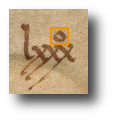
![om[n]em](https://dawnepismo.ank.gov.pl/files/practice/shortcuts/aufgabe-20/cw20omnem.png)
![om[n]imodas](https://dawnepismo.ank.gov.pl/files/practice/shortcuts/aufgabe-20/cw20omnimodas.png)
![penaru[m]](https://dawnepismo.ank.gov.pl/files/practice/shortcuts/aufgabe-20/cw20penarum.png)
![p[er]petuam](https://dawnepismo.ank.gov.pl/files/practice/shortcuts/aufgabe-20/cw20perpetuam.png)
![p[er]sonaru[m]](https://dawnepismo.ank.gov.pl/files/practice/shortcuts/aufgabe-20/cw20personarum.png)
![placac[i]ones](https://dawnepismo.ank.gov.pl/files/practice/shortcuts/aufgabe-20/cw20placaciones.png)
![p[re]dictis](https://dawnepismo.ank.gov.pl/files/practice/shortcuts/aufgabe-20/cw20predictis.png)
![p[re]misso[rum]](https://dawnepismo.ank.gov.pl/files/practice/shortcuts/aufgabe-20/cw20premissorum.png)
![p[re]miu[m]](https://dawnepismo.ank.gov.pl/files/practice/shortcuts/aufgabe-20/cw20premium.png)
![p[re]positus](https://dawnepismo.ank.gov.pl/files/practice/shortcuts/aufgabe-20/cw20prepositus.png)
![p[re]sentem](https://dawnepismo.ank.gov.pl/files/practice/shortcuts/aufgabe-20/cw20presentem.png)
![p[re]sentes](https://dawnepismo.ank.gov.pl/files/practice/shortcuts/aufgabe-20/cw20presentes.png)
![p[re]sentibus](https://dawnepismo.ank.gov.pl/files/practice/shortcuts/aufgabe-20/cw20presentibus.png)
![pri[n]cipis](https://dawnepismo.ank.gov.pl/files/practice/shortcuts/aufgabe-20/cw20principis.png)
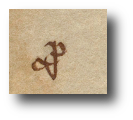
![P[ro]inde](https://dawnepismo.ank.gov.pl/files/practice/shortcuts/aufgabe-20/cw20proinde.png)
![p[ro]testati](https://dawnepismo.ank.gov.pl/files/practice/shortcuts/aufgabe-20/cw20protestati.png)
![qua[m]](https://dawnepismo.ank.gov.pl/files/practice/shortcuts/aufgabe-20/cw20quam.png)
![quascu[m]q[ue]](https://dawnepismo.ank.gov.pl/files/practice/shortcuts/aufgabe-20/cw20quascumque.png)
![quida[m]](https://dawnepismo.ank.gov.pl/files/practice/shortcuts/aufgabe-20/cw20quidam.png)

![q[uo]d](https://dawnepismo.ank.gov.pl/files/practice/shortcuts/aufgabe-20/cw20quod.png)
![quo[rum]](https://dawnepismo.ank.gov.pl/files/practice/shortcuts/aufgabe-20/cw20quorum.png)
![recip[er]e](https://dawnepismo.ank.gov.pl/files/practice/shortcuts/aufgabe-20/cw20recipere.png)
![religiosaru[m]](https://dawnepismo.ank.gov.pl/files/practice/shortcuts/aufgabe-20/cw20religiosarum.png)
![retribuc[i]o[n]is](https://dawnepismo.ank.gov.pl/files/practice/shortcuts/aufgabe-20/cw20retribucionis.png)
![rev[er]encia[m]](https://dawnepismo.ank.gov.pl/files/practice/shortcuts/aufgabe-20/cw20reverenciam.png)
![s[an]c[t]iq[ue]](https://dawnepismo.ank.gov.pl/files/practice/shortcuts/aufgabe-20/cw20sanctique.png)
![Sandom[ir]ie](https://dawnepismo.ank.gov.pl/files/practice/shortcuts/aufgabe-20/cw20sandomirie.png)
![Sandom[ir]ien[sis]](https://dawnepismo.ank.gov.pl/files/practice/shortcuts/aufgabe-20/cw20sandomiriensis.png)
![Secechovien[sis]](https://dawnepismo.ank.gov.pl/files/practice/shortcuts/aufgabe-20/cw20secechoviensis.png)
![s[e]c[un]d[u]m](https://dawnepismo.ank.gov.pl/files/practice/shortcuts/aufgabe-20/cw20secundum.png)
![sp[irit]ualit[er]](https://dawnepismo.ank.gov.pl/files/practice/shortcuts/aufgabe-20/cw20spiritualiter.png)
![subcam[er]arius](https://dawnepismo.ank.gov.pl/files/practice/shortcuts/aufgabe-20/cw20subcamerarius.png)
![su[n]t](https://dawnepismo.ank.gov.pl/files/practice/shortcuts/aufgabe-20/cw20sunt.png)
![sup[er]no](https://dawnepismo.ank.gov.pl/files/practice/shortcuts/aufgabe-20/cw20superno.png)
![Syrazien[sis]](https://dawnepismo.ank.gov.pl/files/practice/shortcuts/aufgabe-20/cw20syraziensis.png)
![te[m]p[or]ibus](https://dawnepismo.ank.gov.pl/files/practice/shortcuts/aufgabe-20/cw20temporibus.png)

![testiu[m]](https://dawnepismo.ank.gov.pl/files/practice/shortcuts/aufgabe-20/cw20testium.png)
![tutamentu[m]](https://dawnepismo.ank.gov.pl/files/practice/shortcuts/aufgabe-20/cw20tutamentum.png)
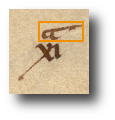
![univ[er]si](https://dawnepismo.ank.gov.pl/files/practice/shortcuts/aufgabe-20/cw20universi.png)
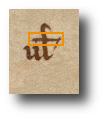
![ven[er]andi](https://dawnepismo.ank.gov.pl/files/practice/shortcuts/aufgabe-20/cw20venerandi.png)
![videlic[et]](https://dawnepismo.ank.gov.pl/files/practice/shortcuts/aufgabe-20/cw20videlicet.png)